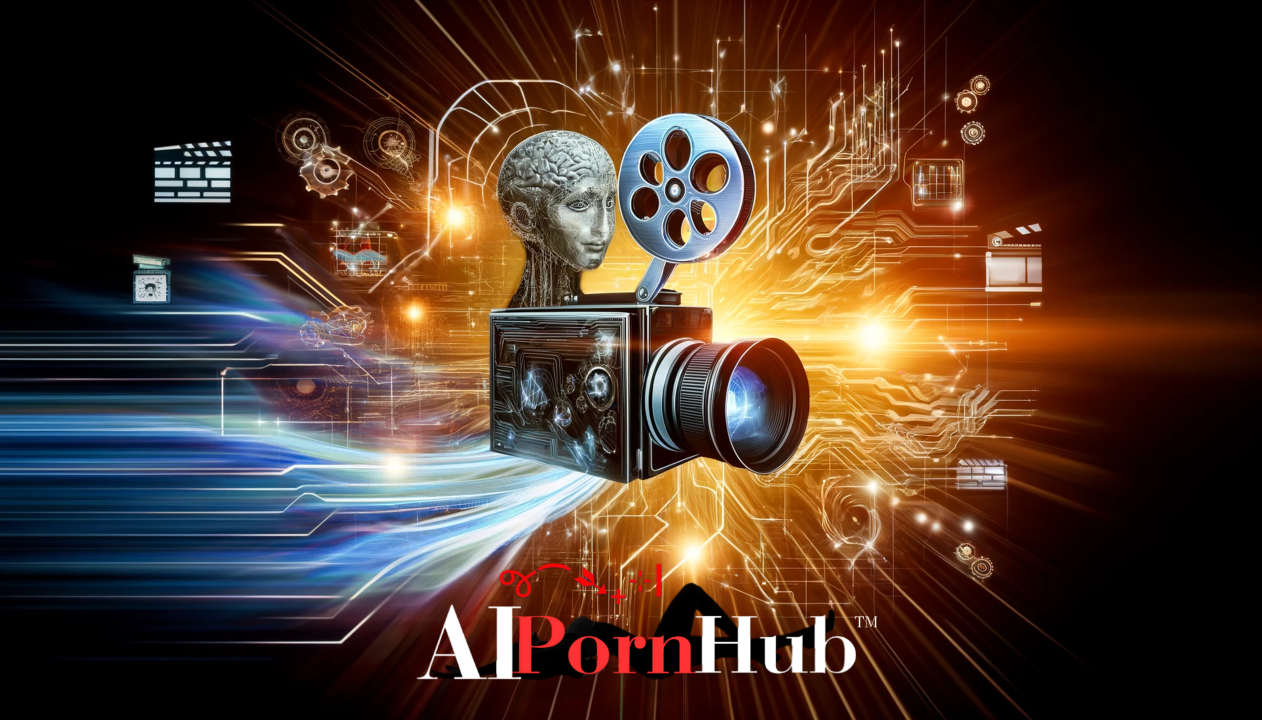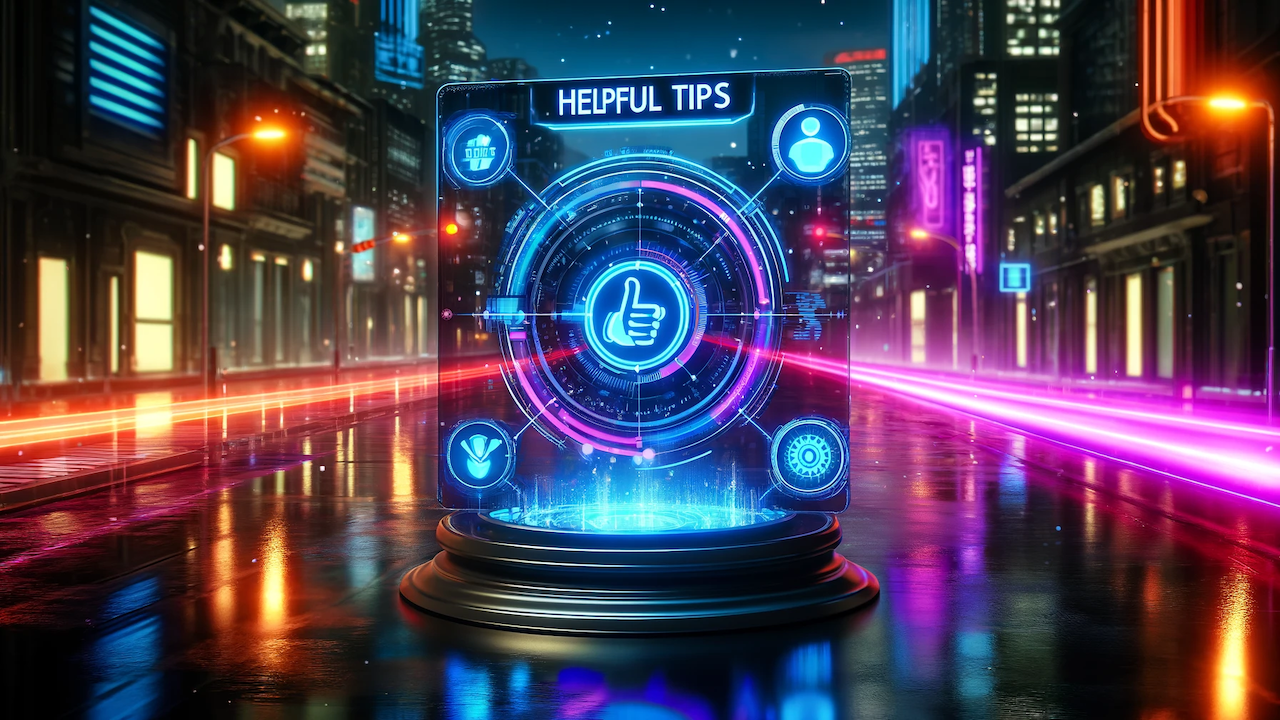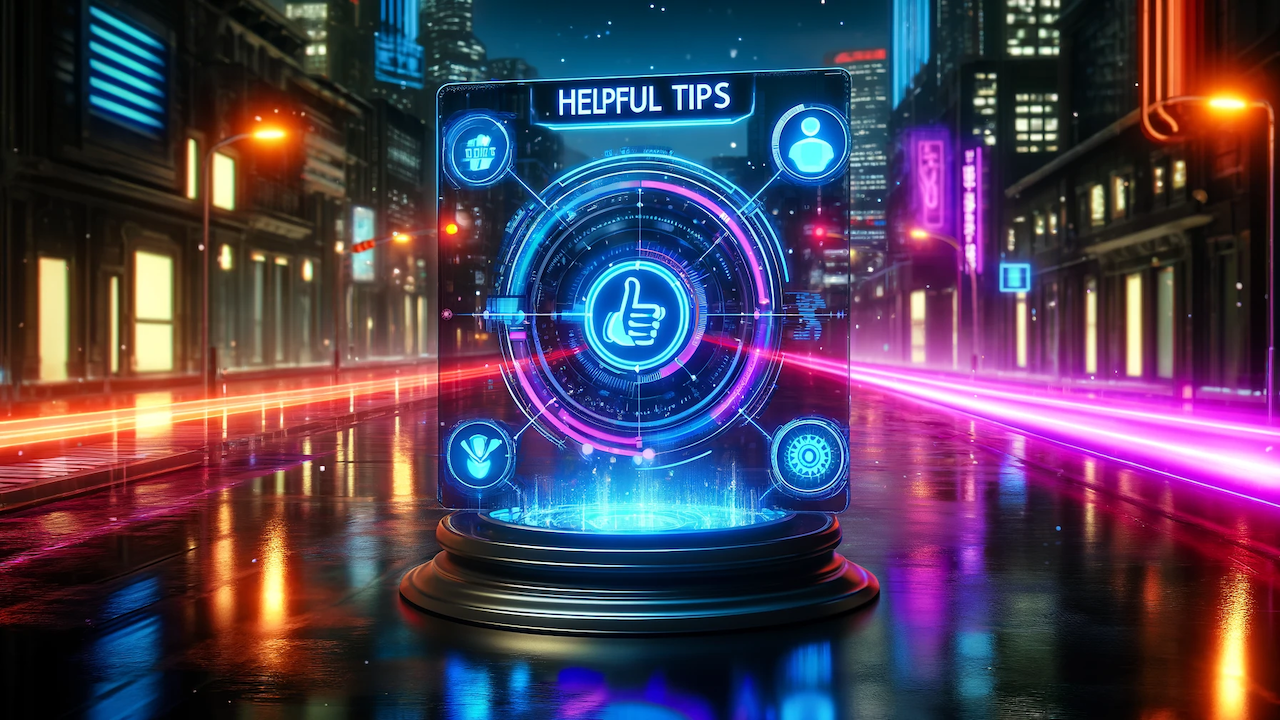OpenAI Sora
Sora: OpenAI's Leap Into Generative Video and Its Broad Implications
Introduction
In an era where artificial intelligence reshapes boundaries across tech landscapes, OpenAI introduces Sora, a groundbreaking generative video model set to redefine the dynamics of video production. Sora stands out as an innovative leap forward, allowing users to transform written text into complex video sequences. This capability not only showcases OpenAI's continued leadership in AI development but also highlights a significant advancement in bridging the gap between textual concepts and visual storytelling.
Sora leverages a sophisticated blend of technologies, including diffusion models and transformer architectures, elements previously successful in OpenAI's text-to-image models like DALL-E. What sets Sora apart is its ability to interpret text prompts and generate corresponding video content that spans up to a minute in length. This process involves a nuanced understanding of narrative elements within the prompt, converting them into dynamic, visually engaging scenes. Whether it’s depicting serene landscapes or bustling city scenes, Sora promises high fidelity and contextually aware video outputs, making it a potential game-changer for creators across various industries. This introduction marks not just a technical milestone but also a new horizon in creative possibilities, poised to revolutionize how content is created, consumed, and conceptualized.
The Technology Behind Sora
OpenAI's Sora represents a significant technological advancement in the field of artificial intelligence, particularly in the domain of generative video. Built on the foundation of two key AI technologies—diffusion models and transformer architectures—Sora stands as a pinnacle of current AI capabilities, integrating the strengths of both to generate high-quality videos from text prompts.
Diffusion Models and Transformers
At the core of Sora lies the diffusion model, a type of generative model previously popularized by OpenAI's image generator, DALL-E. Diffusion models work by gradually transforming a field of random noise into a structured image—or in the case of Sora, a video sequence. This transformation occurs through a deep learning process that iteratively refines the output, adding details and coherence with each step until a complete video emerges.
Complementing this, Sora utilizes transformer architectures, which have been highly effective in understanding and generating text in models like GPT-3 and GPT-4. Transformers process data in sequences, making them ideal for tasks that involve understanding context and continuity, such as sentence formation or, as with Sora, the sequence of frames in a video. By adapting this technology to video, Sora can maintain narrative consistency across frames, ensuring that generated videos are not only visually appealing but also contextually relevant to the input prompt.
Innovations Specific to Video Generation
While previous models like DALL-E focused on still images, Sora extends this concept to dynamic, temporal media. This extension to video requires innovations in handling the increased complexity of moving images. For instance, Sora is designed to understand and generate temporal transitions and interactions within a scene, which are essential for creating videos that feel fluid and natural.
One of the technical achievements of Sora is its ability to segment and interpret video data as a series of interconnected frames, much like how a sentence is broken down into words or characters. This allows Sora to apply the diffusion process not only across the spatial components of a frame but also through the temporal sequence of the video, effectively learning how to "fill in" motion between frames based on the narrative dictated by the text prompt.
Comparison with Previous Generative Models
Compared to DALL-E, which generates static images, Sora represents a leap in complexity and capability by generating video content. While both use a similar underlying technology in diffusion models, the addition of temporal sequence handling via transformers allows Sora to undertake a much more complex task. Similarly, while GPT models are adept at text generation, Sora's challenge is to synthesize visual and temporal data, requiring a deeper understanding of both narrative and visual context.
These enhancements make Sora not just an iterative improvement over its predecessors but a transformative tool that could potentially shift how video content is created, making the process more accessible and creatively liberating for users across various domains. This intersection of diffusion and transformer technologies marks a novel approach in the field, setting a new standard for what generative models can achieve in video production.
Applications of Sora
OpenAI's Sora, with its pioneering video generation capabilities, opens new horizons across various industries, revolutionizing the way visual content is created and consumed. Its implications extend beyond simple video production to fields like media, advertising, filmmaking, and digital content creation, offering a transformative tool for professionals and creatives alike.
Media and Journalism
In the realm of media and journalism, Sora can be used to quickly produce illustrative video content that enhances news stories or complex reports. For example, journalists can generate reenactments of events for which no video footage exists, helping viewers visualize and better understand the news. This application could be particularly useful in documentary filmmaking, where historical or hypothetical scenarios can be vividly brought to life based on descriptive texts.
Advertising
The advertising industry stands to benefit significantly from Sora’s capabilities. Agencies can use the tool to create high-quality ad prototypes or storyboards swiftly, allowing for rapid iteration of creative ideas without the high costs typically associated with video production. Moreover, personalized video content tailored to different demographics or consumer profiles can be generated from textual descriptions, potentially increasing engagement and conversion rates.
Film-making
In filmmaking, Sora offers the potential to dramatically lower the barriers to entry for independent filmmakers by reducing the need for expensive production resources. Filmmakers can use Sora to create detailed previews of scenes or to explore different artistic visions before actual filming begins. This could streamline the creative process, from pre-visualization to final edits, and open up new creative possibilities for storytelling through dynamically generated visual content.
Digital Content Creation
For digital content creators, including YouTubers, game developers, and educators, Sora provides a tool to create rich, engaging content quickly. Educational content creators, for instance, can produce detailed instructional videos that visually depict complex processes or historical events, enhancing learner engagement and retention. Game developers could use Sora to generate cinematic cutscenes or dynamic backgrounds, reducing development time and resource allocation for graphics.
Specific Examples of Sora's Capabilities
Sora's ability to create complex scenes and animations from simple text descriptions can be illustrated with examples such as generating a bustling cityscape with moving vehicles and pedestrians from a brief prompt. Alternatively, Sora could animate a serene, natural landscape transitioning through the four seasons, showcasing its ability to understand and render both temporal and spatial dynamics.
The potential of Sora to revolutionize these fields lies not only in its technological capabilities but also in its ability to democratize high-quality video production, making it accessible to professionals and amateurs alike. As the technology evolves, its applications are expected to expand, further embedding AI in the creative processes of various industries.
The Creative Impact
OpenAI's Sora is not just a technological innovation; it is a paradigm shift in video production, democratizing the process by lowering both cost and time barriers. This newfound accessibility is set to empower a broad spectrum of creators, from professional filmmakers to independent content creators, fostering a new era of creativity and storytelling.
Democratization of Video Production
Sora's impact on video production is transformative, making it feasible for individuals and small teams to create quality videos that would otherwise require significant resources. By reducing the need for extensive equipment, large crews, and expensive software, Sora enables creators to focus more on creativity and less on logistical constraints. This shift not only opens the door for more diverse storytelling but also allows creators from various backgrounds to participate in media production.
Insights from the Creative Community
Filmmakers and animators who have had early access to Sora have expressed excitement about its potential. For instance, a documentary filmmaker might mention, "Sora has changed how we approach storytelling. We can now bring to life historical events in vivid detail, which were previously impossible due to budget constraints." Similarly, an animator could share, "The ability to generate complex animations from simple text inputs has significantly sped up our production process, allowing more time for creative refinement."
These testimonials underscore Sora's role in enhancing creative freedom and efficiency, highlighting its ability to support both the artistic and practical aspects of content creation.
Case Studies of Projects Created Using Sora
Several case studies illustrate Sora's versatility and power:
- Independent Film Project: An independent filmmaker used Sora to create a short film set in a futuristic city. The filmmaker provided text descriptions of the cityscape, which Sora turned into detailed video scenes, complete with dynamic lighting and moving characters. This project showcased Sora's ability to assist filmmakers in visualizing and realizing complex settings without the need for expensive sets or visual effects teams.
- Educational Content: A content creator specializing in educational videos used Sora to produce a series of history lessons. Each video featured animated reconstructions of historical events based on detailed scripts, which Sora translated into engaging, informative videos. This application highlighted how Sora can enhance educational content by providing visually rich, accurate representations of textual descriptions.
- Marketing Campaign: A digital marketing agency utilized Sora for a campaign that required personalized video content tailored to different user segments. By inputting descriptions of scenes that resonate with specific demographics, the agency could quickly generate unique, compelling videos for each segment, dramatically improving campaign engagement rates.
These examples demonstrate Sora's potential to revolutionize various aspects of video production, from artistic expression in film to targeted content in advertising and immersive educational tools. As Sora continues to develop and become more widely available, its impact on the creative industries is expected to grow, continually pushing the boundaries of what can be achieved with AI in video creation.
Ethical and Societal Considerations
As with any powerful tool, OpenAI's Sora brings a range of ethical and societal implications that must be carefully managed. While it offers revolutionary benefits, its ability to generate realistic videos from simple text prompts also poses potential risks, such as the creation of deepfakes and the spread of misinformation.
Potential for Misuse
The capacity to create highly realistic and convincing video content can be misused in several ways. For instance, deepfakes generated using Sora could be employed to create false representations of public figures or to manipulate evidence in media and legal contexts. Such scenarios raise concerns about the integrity of information and the potential for significant harm to individuals' reputations and privacy. Furthermore, the ease with which persuasive visual content can be created may exacerbate the challenges already faced by societies grappling with the spread of misinformation and fake news.
Challenges of Ethical AI Development and Deployment
Developing AI with strong ethical guidelines is crucial to mitigating risks associated with its use. This involves not only designing algorithms that are fair and unbiased but also ensuring that the AI's training data does not perpetuate existing societal biases. OpenAI has acknowledged these challenges and has committed to ongoing research to address the ethical implications of AI-generated content. However, the fast pace of AI development often outstrips the ability of regulatory frameworks to keep up, presenting ongoing challenges in governance and oversight.
Regulatory and Societal Responses
The emergence of AI-driven media creation tools like Sora prompts a need for robust regulatory responses to ensure safe and responsible use. Governments and international bodies may need to develop new legal frameworks to address the unique challenges posed by AI-generated content. This could include laws specifically targeting the creation and distribution of AI-generated deepfakes, as well as broader regulations governing the use of artificial intelligence in media production.
Moreover, societal responses to these technologies will be vital in shaping their development and deployment. Public awareness campaigns can educate users about the capabilities and risks associated with AI-generated video content, fostering a more informed public discourse. Additionally, collaborations between AI developers, policymakers, and civil society organizations can help ensure that AI technologies like Sora are used ethically and responsibly.
In summary, while Sora represents a significant advance in video production technology, it also underscores the importance of careful consideration of the ethical and societal impacts of AI. Balancing innovation with responsibility will be key to harnessing the benefits of AI-driven media creation while mitigating its potential risks.
OpenAI’s Approach to Safety and Ethics
OpenAI is keenly aware of the ethical and societal impacts associated with the deployment of powerful AI tools like Sora. In response, the organization has implemented a multi-faceted approach to ensure that its video generation technology is used responsibly and ethically.
Measures to Mitigate Risks
OpenAI has instituted several measures to minimize the potential misuse of Sora. This includes the implementation of built-in safeguards designed to detect and prevent the creation of harmful or misleading content. For instance, Sora includes filters that attempt to block the generation of inappropriate content, including realistic depictions of violence or misleading representations of historical events and public figures.
Collaborations with Experts
Recognizing the complexity of the ethical challenges posed by generative AI, OpenAI has sought the expertise of various external professionals in fields such as misinformation, digital forensics, and AI ethics. These collaborations aim to refine Sora’s capabilities by incorporating broader societal and ethical considerations into its development process. Experts from academia, industry, and regulatory bodies are consulted regularly to ensure that Sora adheres to the highest ethical standards and is aligned with societal values.
Future Plans for Responsible Use
Looking ahead, OpenAI is committed to continuous improvement of its safety protocols and ethical guidelines for Sora. The organization plans to conduct regular reviews and updates of its policies to keep pace with technological advancements and emerging ethical challenges. OpenAI also intends to engage with policymakers, civil society, and the wider public to foster transparency and public trust in AI technologies.
Moreover, OpenAI is exploring the development of new tools that can help users and regulators verify the authenticity of video content, making it easier to distinguish between AI-generated and genuine videos. This is part of a broader effort to ensure that as AI technology evolves, it remains a positive force for society, enhancing creative capabilities without compromising truth and trust.
In summary, OpenAI’s approach to the safety and ethics of Sora underscores its commitment to responsible AI development. Through rigorous safety measures, expert collaborations, and forward-looking policies, OpenAI aims to maximize the benefits of Sora while mitigating its risks, ensuring that its use in society is both innovative and ethical.
Market Impact and Future Prospects
The introduction of OpenAI's Sora is set to have a profound impact on the creative industries and beyond, revolutionizing how digital media is produced and consumed. The future of AI video generation technologies like Sora is bright, with significant implications for various sectors including entertainment, education, advertising, and more.
Impact on Creative Industries
Sora democratizes the production of video content, making high-quality video creation accessible to a broader range of creators, including those with limited technical or financial resources. This shift could lead to a surge in creative content production, fostering diversity in storytelling and perspectives that were previously underrepresented due to cost barriers.
In the advertising sector, Sora enables brands to produce tailored content quickly and cost-effectively, potentially transforming marketing strategies and consumer engagement. In film and television, Sora could reduce production times and costs, allowing for more experimental and niche content to be developed that might not otherwise receive funding due to financial risks.
Future Developments in AI Video Generation
The technology behind Sora is likely to continue advancing, with improvements in realism, the ability to handle longer and more complex video sequences, and enhanced understanding of nuanced human interactions. Future versions of Sora and similar tools might incorporate augmented reality (AR) and virtual reality (VR), blending AI-generated content seamlessly with real-world environments, further blurring the lines between virtual and physical experiences.
Advances in AI ethics and safety measures will also be critical, as these technologies become more capable and widespread. Developing robust methods to authenticate AI-generated content will be essential to prevent misuse and maintain trust in digital media.
Predictions for the Next Decade
Over the next decade, tools like Sora are expected to fundamentally reshape the landscape of digital media. With AI becoming increasingly integrated into content creation, traditional roles in industries such as filmmaking, graphic design, and advertising may evolve, as AI tools take on more of the technical load, allowing humans to focus on strategy and creative direction.
Moreover, the rise of AI video generation could lead to new forms of entertainment and information dissemination, with interactive and personalized content becoming the norm. For instance, viewers might be able to customize the plot or setting of a video in real-time, creating a highly personalized media consumption experience.
In summary, the market impact of Sora and its future prospects point to a transformative shift in digital media production. As these technologies advance, they promise not only to enhance creative capabilities but also to challenge existing business models, regulatory frameworks, and cultural norms. This evolution will likely stimulate significant debate and innovation in how we create, consume, and conceptualize media in the digital age.
Conclusion
Sora, OpenAI's latest innovation in video generation technology, stands poised to redefine the landscape of digital media. With its capacity to convert text prompts into detailed, dynamic videos, Sora embodies the tremendous potential of AI to unlock new realms of creativity and efficiency in content creation. This transformative technology could significantly democratize video production, making sophisticated visual storytelling accessible to a broader range of creators and industries.
As we embrace the benefits of such innovations, the importance of balancing these advancements with responsibility cannot be overstated. The potential for misuse of technologies like Sora, particularly in creating deepfakes or spreading misinformation, necessitates a careful approach. OpenAI's commitment to safety and ethics highlights the critical need for ongoing vigilance, robust regulatory frameworks, and continued collaboration among technologists, policymakers, and the public.
Looking forward, the journey of AI in media and beyond is one of both opportunity and caution. As AI technologies like Sora evolve, they will undoubtedly shape the future of digital media, offering new tools for expression and communication. However, ensuring these tools are used for the benefit of society will require a concerted effort to uphold principles of integrity and trust in the digital age.
In conclusion, Sora is not just a technical achievement but a call to action for thoughtful innovation and ethical responsibility in AI development. By fostering an environment where technology serves the greater good, we can harness the full potential of AI to enrich and elevate human experiences.












Comments (0)
No comments found